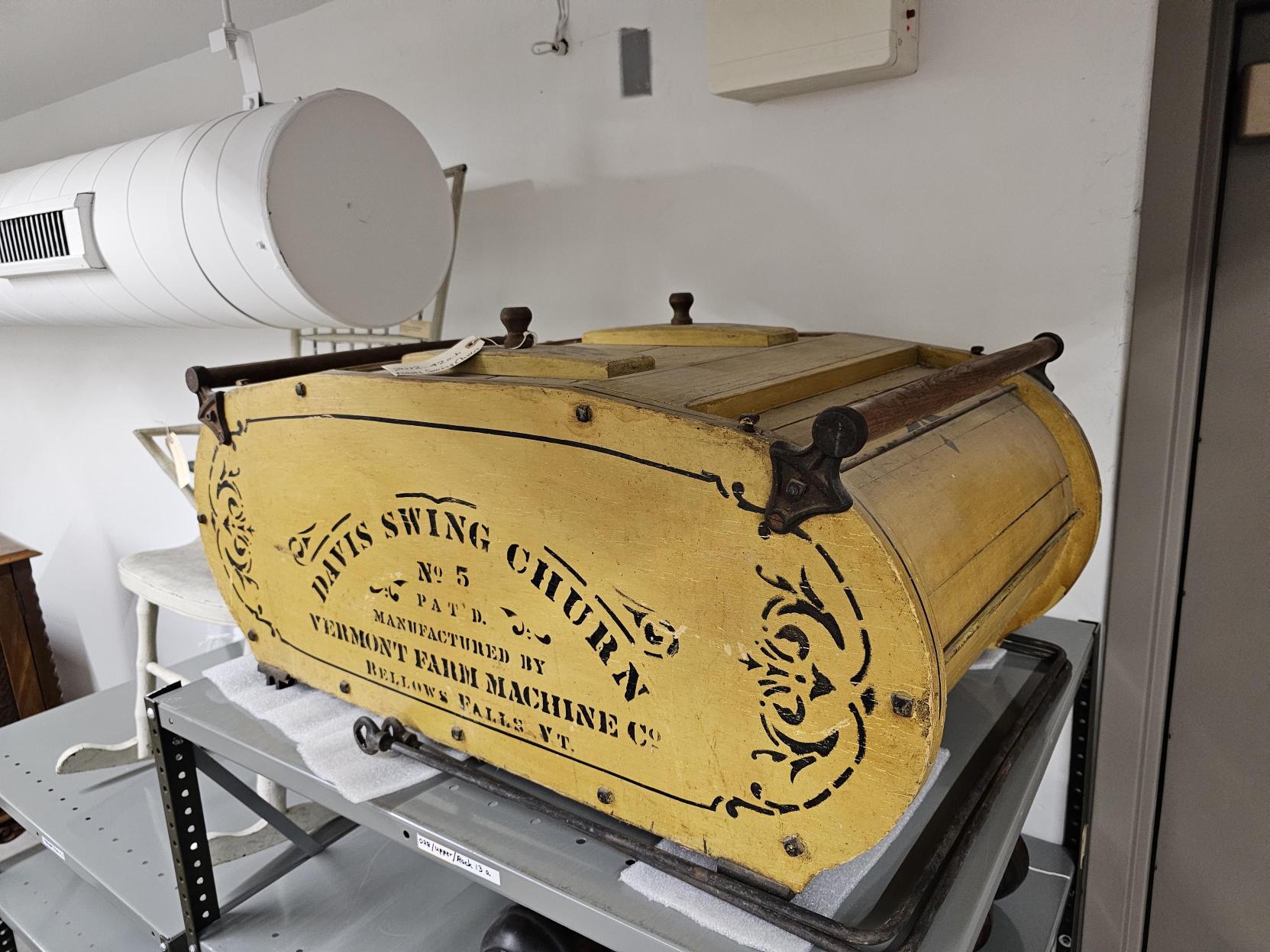Call it A New Life
Technological improvements, from butter churns to electricity, transformed life on Vermont farms from the 1890s through the mid-20th century. Many of these changes eased the workload of Vermont’s farming families. But other changes – done in the name of modernity – had long-term impacts on the future of dairy in our state.
This Episode’s Featured Object:
Davis Swing Churn
Teresa Green: Yeah. The Davis swing churn was an iPhone. These [other churns] were your like, Nokia bricks. And the old ones were just like the rotary phone.
Buttermaking display at Billings Farm and Museum in Woodstock, VT.
The still-operational water-powered swing churn at Billings Farm and Museum.
Episode Transcript
Christine Scales: This is the 1890s creamery. And it’s set up as it would have been set up in 1890.
Ryan Newswanger: We’re at the Billings Farm and Museum in Woodstock. We’re visiting with Christine Scales in the basement of the museum’s large, beautiful farmhouse. She’s the Director of Education and Interpretation at the Museum.
Christine: And part of the purpose of the house being built was to have this state-of-the-art creamery in the basement.
Ryan: Hanging from the ceiling in this creamery is a light brown wooden box. It looks like a large cradle, or maybe a small coffin. But it’s neither of those things…it’s a swing churn for making butter.
Noel Clark (on recording): Can we see it work?
Episode Credits
Before Your Time is presented by Vermont Humanities and the Vermont Historical Society. This episode was produced by Noel Clark and Ryan Newswanger, with help from Teresa Greene and Amanda Kay Gustin. Special thanks to Vermont Folklife for the use of their archival oral history interviews about rural electrification.
Music is by Michael Chapman and the Woodpiles, Cutesy Chamber Ensemble, Hemlock, Ilya Truhanov, Albert Behar, and Jason Shaw.



